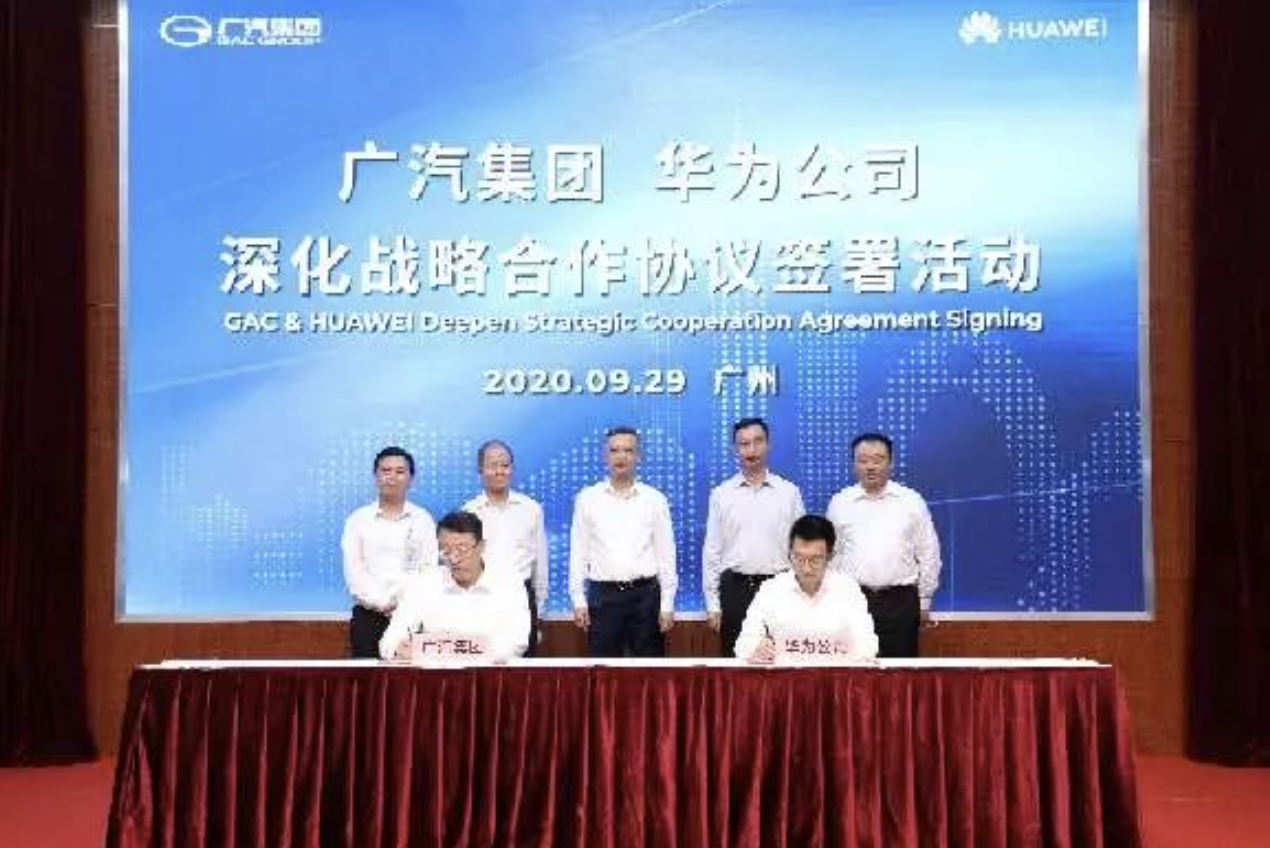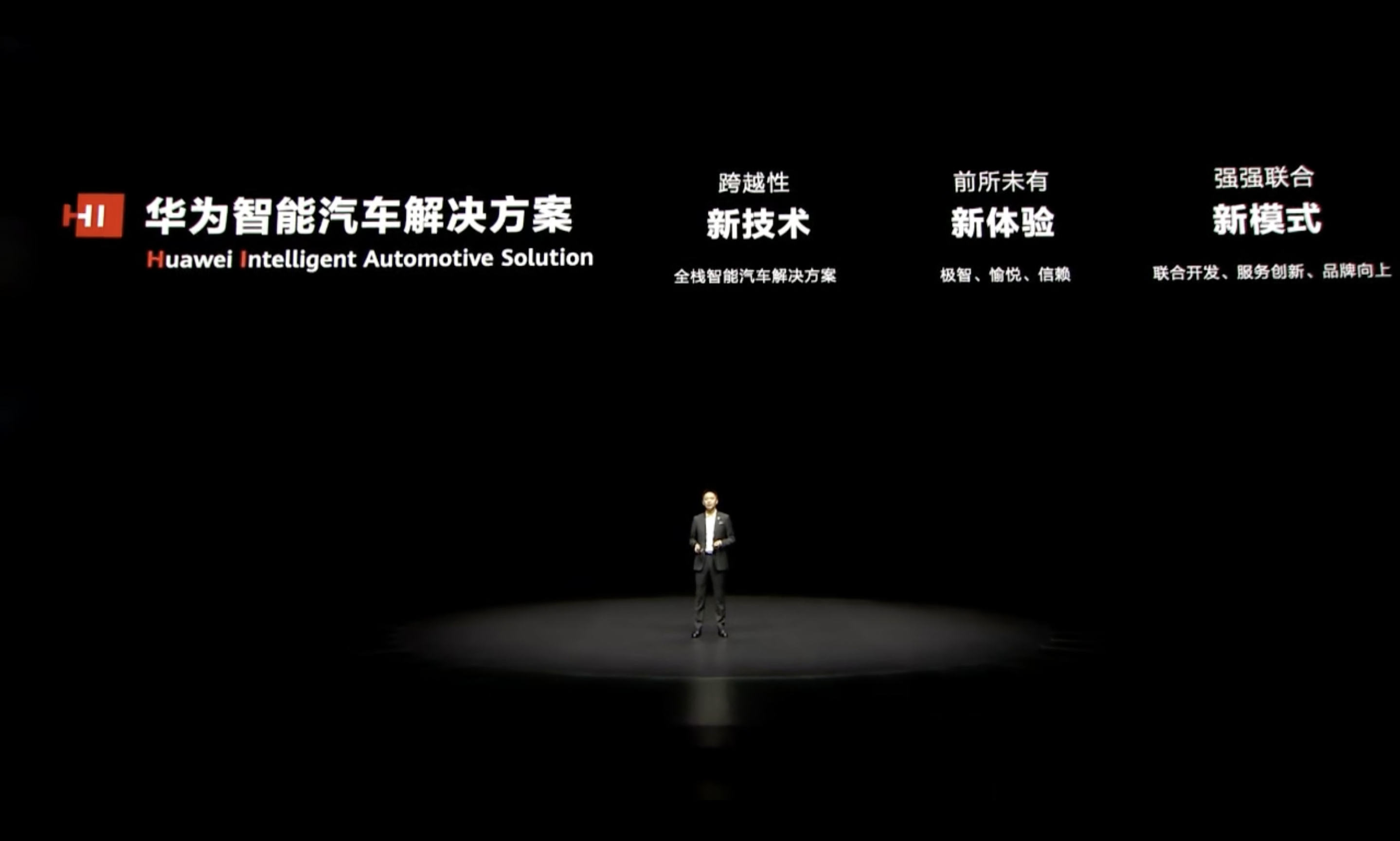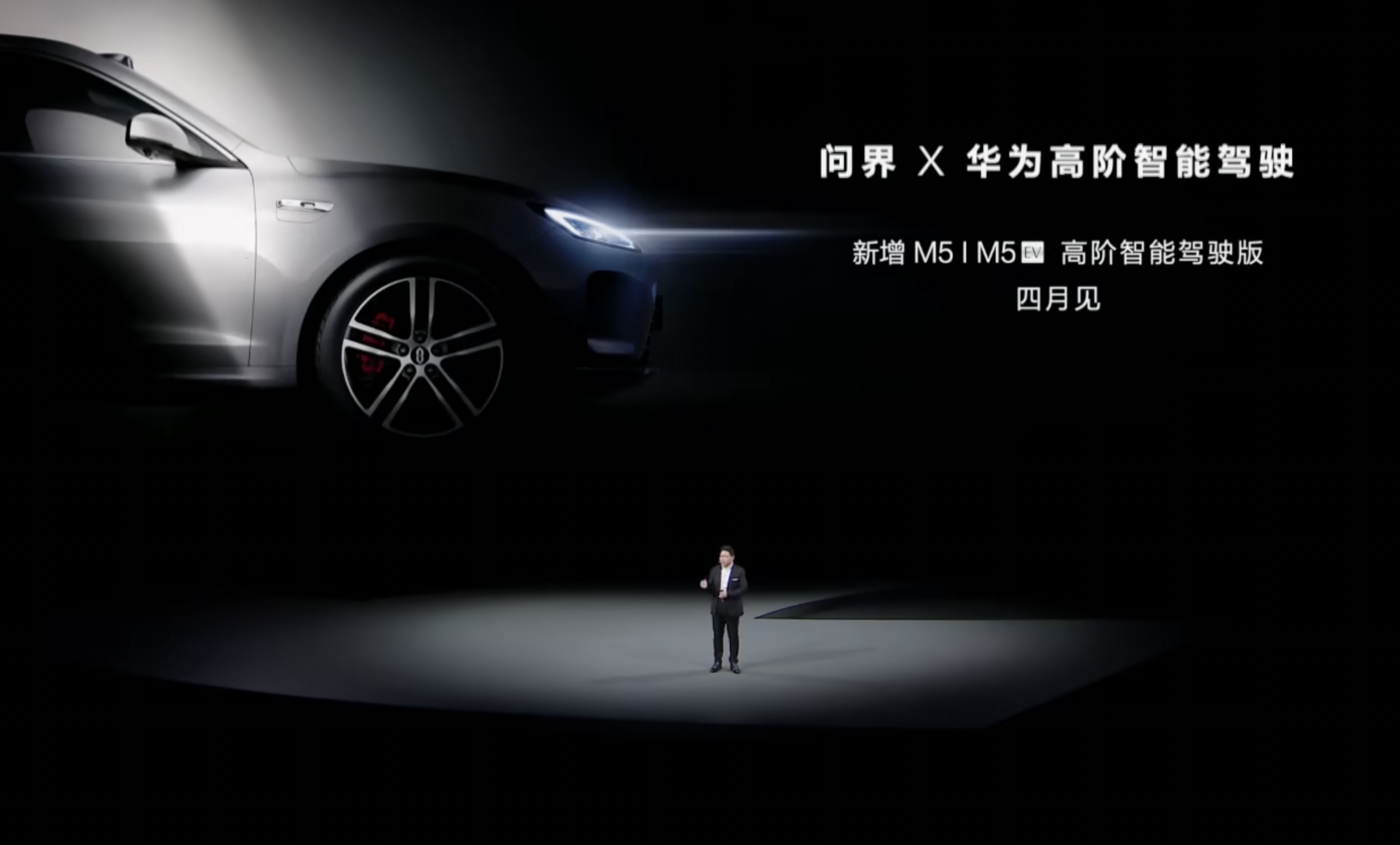Huawei and Guangzhou Automobile Group (GAC) have announced their “breakup”, but they have decided to “remain friends”.
On March 27th, GAC announced that its subsidiary, Guangzhou Automobile Group Electric Vehicle Co Ltd’s AH8 project, which was previously developed with Huawei, would now be independently developed due to resource allocation reasons. However, Huawei will continue to participate in the development and cooperation of the company’s own brand vehicles as a significant supplier after the change.
Regarding this change, GAC stated to Garage 42 that AH8 is a 6-seater model belonging to GAC Electric’s high-end brand, Hao Po. Huawei will now cooperate with GAC in the digital cockpit aspect as a supplier for AH8.
It is worth mentioning that, at the Guangzhou Automobile Group’s 2022 financial results conference call on March 30th, Chairman of GAC, Zeng Qinghong, remarked:
“Earlier, GAC planned to develop a new brand in 2025 in joint collaboration with Huawei; however, GAC already has two new brands: Ai An and Hao Po. There is no need to launch another brand. After friendly consultation, both parties decided to transform Huawei into a supplier through complementary advantages. Nonetheless, Huawei will remain a strategic supplier and partner.”
Huawei responded officially, saying:
“After thorough communication between GAC and Huawei and comprehensive judgment based on actual situations, the decision was made to develop Ai An independently. After this adjustment, Huawei will continue to participate in the development and cooperation of GAC’s own-brand vehicles as an important supplier.”
From the perspective of both parties’ public statements, Huawei and GAC are still maintaining their cooperative status. However, it is difficult to ignore the fact that the HI mode, which Huawei meticulously built in its cooperation with GAC, has come to an end with this adjustment.
No “honeymoon period” of conflicting interests
In fact, before the birth of Huawei’s HI mode, Huawei and GAC had already established a cooperative relationship.
On June 21, 2017, witness by GAC Chairman Zeng Qinghong and Huawei’s rotating CEO Xu Zhijun, Huawei and GAC signed a cooperation agreement. The two parties stated that they would conduct deep cooperation in enterprise management, cloud computing, big data, connected cars, intelligent driving, new energy, and international business expansion, among other fields.
It should be pointed out that although the cooperation between the two sides also mentioned the car networking and intelligent driving at that time, the focus was actually on the peripheral aspects such as enterprise management, cloud computing, big data and internationalization. After all, Huawei had not publicly entered the automotive intelligence business at that time, hoping to promote its own cloud computing business through Guangzhou Automobile, while Guangzhou Automobile hoped to rely on Huawei’s advantages in enterprise management and internationalization for its own empowerment.
At that time, Huawei was completely an image of a cross-border enabler for Guangzhou Automobile, and there was no conflict of interest between the two sides.
However, at that time, the automotive industry was moving towards electrification, intelligence, and networking, and Huawei also began to layout intelligent electric vehicle-related businesses based on its advantages in intelligentization. And in May 2019, Huawei Intelligent Automotive Solution BU was established.
Therefore, when Guangzhou Automobile and Huawei announced the deepening of strategic cooperation in September 2020, the Vice President of Huawei Intelligent Automotive Solution BU, He Liyang signed the contract on behalf of Huawei (He Liyang later left Huawei and joined XPeng Motors, and then left in 2022), and the witness was still Huawei’s rotating chairman Xu Zhijun.
In this agreement, the two sides clearly defined their cooperation in the core automotive business field-focusing on computing and communication architecture, embracing the trend of software-defined automotive development, and combining the joint research of the two parties in intelligence, networking, and electrification to jointly create a sustainable iterative upgrade of the digital platform and truly realize Software-defined car.

It is worth mentioning that Huawei officially announced the HI brand one month after the signing of this agreement. Its meaning is: Huawei Intelligent Automotive Solution.
In April 2021, just before the opening of the Shanghai Auto Show, Xu Zhijun officially announced at the Huawei Analyst Conference that Huawei does not make cars, but helps car companies make good cars. At the same time, Xu Zhijun revealed that Huawei mainly cooperates with three automakers, namely BAIC, Changan, and Guangzhou Automobile, to help them create automobile sub-brands, and “there won’t be too many such deeply cooperative clients.”Xu Zhijun said:
We support automakers to create their sub-brands in the way of “Huawei Inside”, empowering some automakers to truly make future-oriented cars… We designed a brand logo called “HI” for the “Huawei Inside” mode, representing Huawei Inside. When you see the HI logo in the future, it proves that it is a car created by Huawei and its partners.
Xu Zhijun also emphasized that not all degrees of cooperation will be marked with the HI (Huawei Inside) logo, only vehicles using Huawei’s automatic driving solutions can be marked with this logo.

In that month, Feng Qingya, the general manager of GAC Group, said in an interview that he wanted to cooperate with Huawei to create a truly unmanned driving car for L4 level. It will be put into production in 2024. This car is not transformed from existing products, but is a car model specially designed for unmanned driving for mass production and listing in 2024 based on a new electronic and electrical architecture. At present, all research and development work is being orderly promoted.
At this time, Huawei and GAC seem to be in a “honeymoon period” in the HI mode cooperation.
Ignoring between two announcements
It should be noted that GAC’s pace is the slowest among the three automakers that began to cooperated with Huawei on the HI mode.
For example, before the 2021 Shanghai Auto Show, the Alpha S Huawei HI version of Juehu was released. This was the first car with the Huawei HI brand logo, and also the first mass-produced car with the Huawei intelligent car solution at full stack. It is equipped with Huawei’s ADS high-level autonomous driving full-stack solution, and Huawei also demonstrated its actual experience of autonomous driving technology for the first time through this car, attracting the attention of the industry.
Let’s take a look at Changan. After announcing its cooperation with Huawei to create a new energy high-end intelligent car brand in November 2020, the information announced by Changan during the 2021 Shanghai Auto Show was: It is still polishing the first high-end car brand-related product jointly created with Huawei, and the brand name will be announced recently. The first model of the brand is expected to be released at the end of this year – subsequently, Changan renamed Changan Nio to Avita in May 2021.In contrast, it was not until July 2021 that Guangzhou Automobile Group Co., Ltd. (GAC Group) announced that its wholly-owned subsidiary, GAC Aion New Energy Automobile Co., Ltd., agreed to implement the project of AH8, in cooperation with Huawei.

According to the announcement, based on the Guangzhou Automobile GEP3.0 platform and the Huawei CCA (Computing and Communications Architecture) architecture, the two parties will jointly define and develop a new generation of intelligent automotive digital platform, equipped with Huawei’s full-stack intelligent automotive solutions, and jointly build a series of smart vehicles towards the future.
However, in the following year, there were almost no public developments in Guangzhou Automobile’s collaboration with Huawei, while Enovate and Avatar, which adopted the HI mode, made frequent moves. Among them, the Alpha S Huawei HI Edition of Enovate was delivered in the first half of 2022, although the speed was slow, it has been continuously progressing. Avatar, on the other hand, completed a series of actions step by step, such as brand release, new car unveiling, and Industry and Information Technology Ministry declaration, and officially went public in August 2022.
It is worth mentioning that Huawei’s role in the automotive industry has undergone significant changes during this one-year period.
Specifically, during the Shanghai Auto Show in April 2021, in addition to launching the HI mode, Huawei also cooperated with Seres to launch the Seres SF5 Huawei Smart Selection Edition, and displayed and sold it in Huawei’s consumer stores. This is the “Smart Selection Car” mode led by Richard Yu. At that time, Huawei’s HI mode and Smart Selection Car mode were completely two separate solutions, and the two parties did not interfere with each other.
Subsequently, Richard Yu became the CEO of Huawei’s Intelligent Automotive Solution BU and released the AITO WENJIE new brand and WENJIE M5 new car at the end of 2021, and promoted them with his influence. In 2022, after WENJIE M5 was launched, it became a sales dark horse, and even achieved the monthly delivery of over ten thousand units for the first time in August.
 It is quite a coincidence that the cooperation between GAC and Huawei, which happened to coincide with the launch of AVITA’s IPO and the first delivery of WENJIE brand exceeding 10,000 units in the same month, has suffered a known crack in the public eye.
It is quite a coincidence that the cooperation between GAC and Huawei, which happened to coincide with the launch of AVITA’s IPO and the first delivery of WENJIE brand exceeding 10,000 units in the same month, has suffered a known crack in the public eye.
On August 13, 2022, at the 19th China Automotive Marketing Brainstorming Summit·Hangzhou Summit, Xiao Yong, Vice President of GAC Aion, couldn’t help but publicly criticize Huawei when answering questions about batteries, saying that Huawei, as a well-known supplier, has a relatively high price and is not controllable. GAC Aion would find itself with hardly any bargaining power if it worked with Huawei.
Xiao Yong also said in his speech that automakers should consider technological innovation and reasonable costs when developing products.
Later in late August, rumors appeared online that Huawei’s deep cooperation project with GAC Aion had been suspended, and the two sides had become merely parts supply and procurement relationships. In response, Aion’s related person in charge said, “This is not factual. Our cooperation project with Huawei is still progressing normally.”
However, the problem is that when Aion announced its new high-end brand “Hyper Haobo” in September 2022, there was no visible presence of anyone from Huawei on the scene, nor was there any sign of Huawei’s HI mode.
For the next six months, until March 2023, when GAC Group announced the adjustment of the AH8 project, there was no further news of cooperation between the two parties.
Huawei and GAC may no longer be interested in cooperation
Regarding the adjustment of the cooperation between the two parties, GAC cited “due to resource allocation and other reasons.”
Sources told the garage 42 that GAC’s claims were not unreasonable. After all, in the past, in the process of cooperating with Jixiong and AVITA, Huawei had to send a large number of employees to the car factory to work on site in order to jointly develop products. For Huawei, this was a significant resource investment in terms of both manpower and finance, and the cost did not match the return – in this case, with the previous cooperation with Jixiong and AVITA, Huawei may no longer be willing to make these investments.
According to insiders, another possible reason is that the hardware MDC computing platform based on Huawei’s HI mode is facing a chip shortage problem.
This is not difficult to understand, as Huawei lost the means to manufacture self-developed chips after being sanctioned in 2020, which means that the number of chips that MDC computing platform can adopt is limited – in this case, the car models that adopt HI mode will actually be affected at the chip level.
Besides “resource allocation,” GAC has other reasons not to cooperate with Huawei on development.
An industry analyst told 42Cars that Huawei actually has a more dominant side in collaboration, but for GAC, it is considering whether the HI mode can bring enough benefits. In terms of sales, the ARCFOX Alpha S Huawei HI version supported by Huawei has not become a popular product, and the Avita project also encountered problems in software and automatic driving during the development process, which was delivered four months after the launch, and its current sales are not good.
Therefore, “the HI mode has not proven its value-added effect for car companies. Relatively speaking, Huawei benefits more from it, not car companies.”
This industry source said that another consideration for the three car companies cooperating deeply with Huawei is the construction of high-end brands. However, because ARCFOX and AVITA run faster, they have already borrowed from Huawei’s brand advantage in consumer awareness; However, this also means that for latecomers like GAC, Huawei’s high-end brand halo has been borrowed by other car companies and faded over time, so brand leverage is extremely limited.
In addition, with the “HUAWEI Ask the world” brand identity already appearing in March this year, GAC has no reason to borrow Huawei’s brand influence anymore, after all, “Huawei has already suffered the consequences.”
Interestingly, another senior practitioner told 42Cars that not only GAC is unwilling to cooperate again, but Huawei’s own willingness to cooperate with GAC is also relatively low.
The reason behind this is twofold. On the one hand, as mentioned earlier, resources are limited, and Huawei is more willing to invest more resources into the “HUAWEI Ask the world” model. Huawei has also announced that the new version of the Ask the world M5 will be equipped with Huawei’s autonomous driving system and is “closed” for components like MDC.
On the other hand, with the Huawei internal personnel adjustments at the beginning of 2023, Yu Chengdong has completely led Huawei Terminal BU and Huawei Intelligent Car Solution BU, and with the new Ask the world M5 (Yu Chengdong has announced that the new Ask the world M5 will be equipped with Huawei’s advanced intelligent driving), the two have been connected – this means that Huawei has actually changed its previous strategy of walking on two legs with HI mode + smart car mode, but has adopted a practice of concentrating all its strengths to boost sales.将会受到多少打击?华为的智能汽车业务将何去何从?

Apart from the aforementioned reasons, Richard Yu, CEO of Huawei’s consumer business group, faces another challenge as Huawei’s smart car business also faces profit pressure. In this situation, Huawei has more reason to pour a large number of core resources into models that can bring sales and revenue, rather than cooperating with car companies such as GAC that pursue independence and brand development, which is naturally not among Huawei’s top priorities.
Therefore, “the breakup between GAC and Huawei should be an inevitable result that both parties have no intention of operating,” said an industry insider.
Where will Huawei’s HI mode go?
According to GAC, Huawei will continue to participate in the development and cooperation of the company’s independent brand models as an important supplier.
From “collaborative definition” to “important supplier,” Huawei’s role has undergone a fundamental change in its cooperative relationship with GAC. For GAC, this means that it will become the absolute leader of the AH8 model, and Huawei will only participate as a supplier, without any say in product definition, function development and other aspects.
For GAC, which emphasizes self-research and control and “holding the soul in its own hands,” such cooperation may be more comfortable.
For Huawei, however, the fork in the road with GAC’s HI mode cooperation marks a turning point.
After all, although Huawei is still playing the role of a supplier in the automotive field, it has undoubtedly become an important participant in the entire vehicle market. With the “HUAWEI EV” brand models, Huawei has formed direct competition with other car companies such as GAC, even though Huawei does not have its own manufacturing factory. From the current situation, there is no essential difference if Huawei personally participates in car manufacturing.
Under such circumstances, GAC, as a direct competitor, really has no reason to continue to choose Huawei’s HI mode and hand over the “soul” of intelligent driving to Huawei.
Therefore, a truly worthy issue to be concerned about is:
After GAC exits, how much impact will Huawei’s HI mode, which empowers other car companies, have, apart from existing customers such as BAIC and Changan? Where will Huawei’s smart car business go?Is there still room for survival?
This article is a translation by ChatGPT of a Chinese report from 42HOW. If you have any questions about it, please email bd@42how.com.
